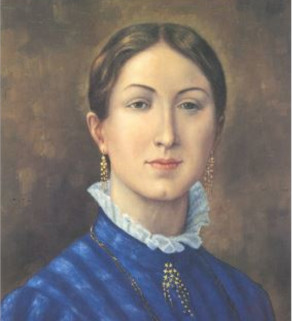
Jeanne Bigard and her mother, Stephanie, had suffered from personal tragedies – the father had committed suicide and her brother was accidentally burnt to death. Both became virtual recluses, living almost as hermits. They turned to good works and became interested in making altar linen and vestments for missionaries in Japan.
Made aware of their interest, Fr. Villion, who was stationed in Japan, approached them in 1888. From Kyoto in Japan, he asked them for assistance in building a church. Although very wealthy, they were also very careful with money. Ultimately, they sold some land and a factory and gave 50,000 francs which enabled Fr. Villion to build his church.
In 1889, a French Bishop of Nagasaki, Jules-Alphonse Cousin, suggested to the Bigards that they might consider supporting boys in Japan to train for the Priesthood. Thus, was born the idea of a general society to promote indigenous clergy throughout the world. The Bigards donated to the new society the whole of their considerable fortune. Approved by the Pope in 1890, it too became a Pontifical Mission Society in 1922.
The Society of St. Peter the Apostle trains young men and women in their own country and culture to serve their people as religious Sisters, Brothers, or Priests. Also assisted are in their formation and training are those catechists who have been chosen to be the teachers and mentors of the catechists in their country.